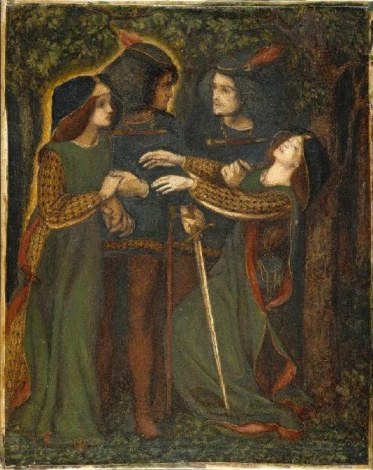Count the number of times you check yourself out in the mirror every day, I dare you. Count the number of times you would have ever looked at your reflection in the looking glass, I dare you. Count the number of hours you have spent and will spend in a lifetime staring closely at your all-too-familiar image, I dare you.
We live with so many mirrors around our living spaces, we are bound to get obsessed with how we look. There was never an introduction, but our image has always been too familiar to our gaze to need an introduction. Stop and reflect… Can you even recall the first time that you looked at your reflection? I wonder how you might have felt. I also wonder about the person who had first encountered a reflection of their own. They couldn’t have been aware that it was just an image produced by a reflective surface, so what did they think it was? What would have been their reaction? I bid you to wonder.
You and I would not be the first to go on that flight of fancy. Myth, legend, and literature bring us many stories of the human’s first encounters with their images; but the first that comes to my mind is not of Narcissus drowning himself in self-love or of Eve getting enchanted by her own image. It is rather the elementary tale of a dog barking at its own reflection in the pond, apprehending it to be a rival and a threat to his loaf of bread. The character in question might not be a human, but the reaction it gives seems most likely in that event of a very first innocent encounter.
Dante Gabriel Rossetti paints one such scene in which a couple comes face to face with their mirror images in a fantastical ‘mirror’ world. How They Met Themselves portrays two identical couples, each walking hand-in-hand with their partner, strolling through the middle of woods, dressed in identical medieval attire, carrying the same objects, as they stumble upon each other. The four individuals betray a different reaction each to their incredible sights.
The inspiration behind Rossetti’s How They Met Themselves comes from the idea of mirrors, reflection and the similar-looking but (physically) inaccessible ‘other side’ of mirrors. Rossetti was one of the founders of the 1848 Pre-Raphaelite Brotherhood and the Pre-Raphaelites obsession with mirrors is certainly intrinsic to his works.
Unlike most paintings from the school that the pre-Raphaelites influenced, the painting does not feature mirror as a physical object but uses it as a concept instead. The way they are situated exactly opposite each other, painted in likeness as they are, is obviously intended. Of the two pairs, the one on left can be clearly identified as the ‘reflection’ as it is outlined by a faint glow that marks them as inhabitants of an ‘other’ fantastical world.



There are three different versions, though extremely similar in rendering, which Rossetti painted around 1851 and 1864. There are very minor yet notable differences in the three, but these minute details provide scope for much interpretation. In all three versions, the encounter is a dismal misadventure as the ‘real’ lady faints at the sight of her ‘other’. The ‘reflected’ woman’s expressions can be interpreted as concern in one, and suspicion or hostility in the others. The ‘reflected’ man stares in shock at his ‘other’ while the ‘real’ man looks shocked in one, confused in the other and carries a blank face in the third. In all three versions, the ‘real’ man’s sword is drawn. He is ready to fight the ‘other’, not knowing what else to do—just like the dog barking at its own reflection in the pond.
I often enjoy holding babies up in front of mirrors to watch them get fazed at first and then stare blankly in confusion. Sheer fun, I tell you! But now I wonder what they feel—looking into the mirror, looking at themselves, without any idea what either is. Our images can’t be mesmerizing to us before we familiarize them enough to become obsessed with them. Yet after spending uncountable hours of our lives in front of a mirror, after consuming our own image to the point of obsession, can we still remember how it once left us fazed and frightened?
It seems Rossetti also found the dog’s story more probable than the myths of Narcissus and Eve. Later in his life, he filled his home and studio in Chelsea with mirrors. His visitors admitted that coming across the mirrors over and over again all around the house made them eerily anxious and frightened. It seems as if Rossetti’s invitation had said, “Come, visit and meet yourself, I dare you.” What do you think his intentions were? Was it to remind them that it was their reflection that scared them once, and still could? I bid you to wonder.
Written by Eshna Gupta
Issue edited by Shriya Kotta
Featured Images provided by Eshna Gupta

